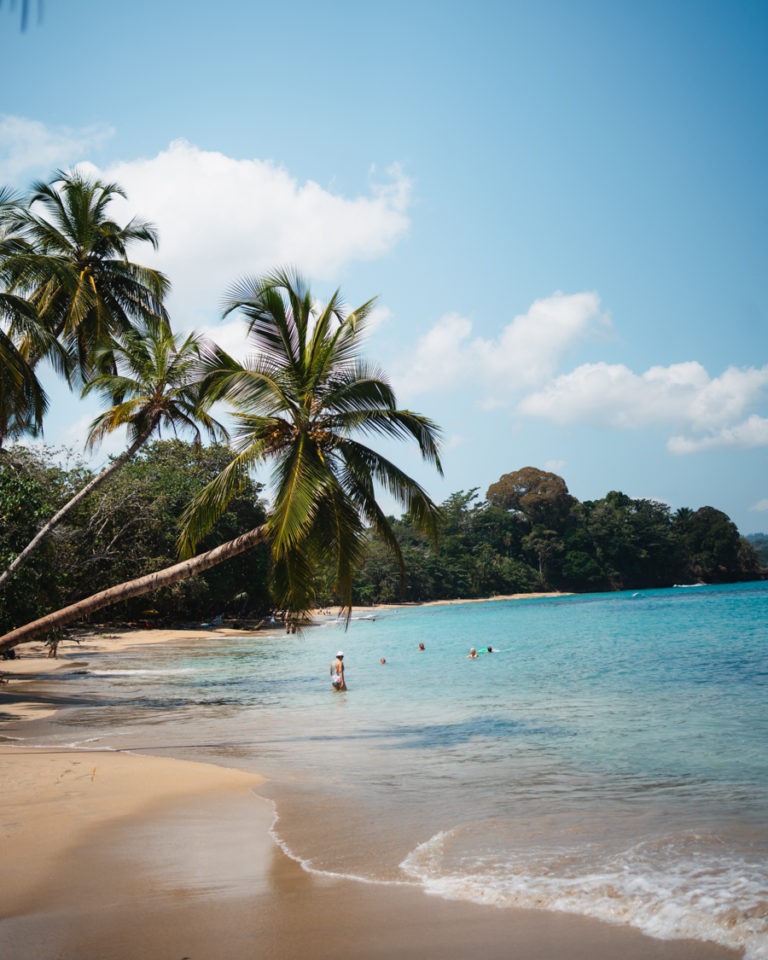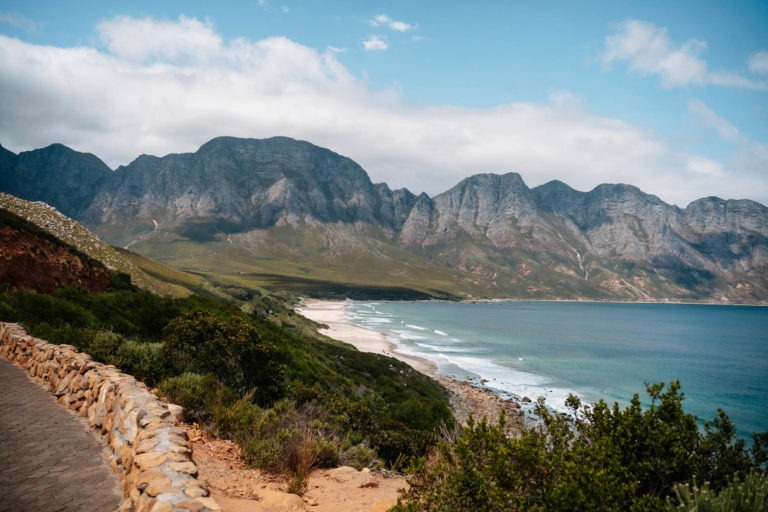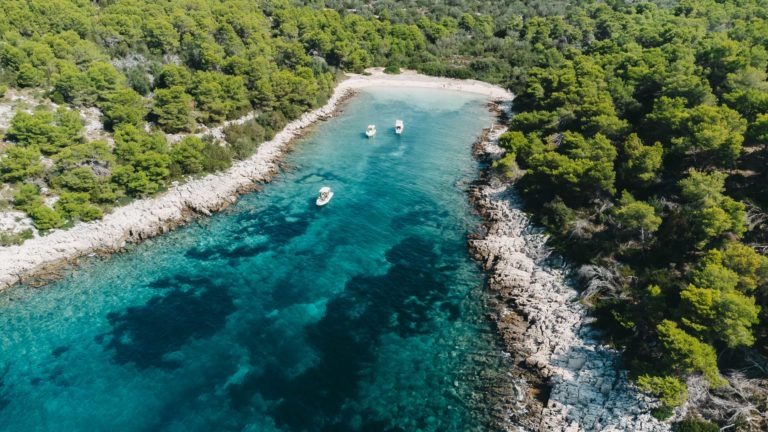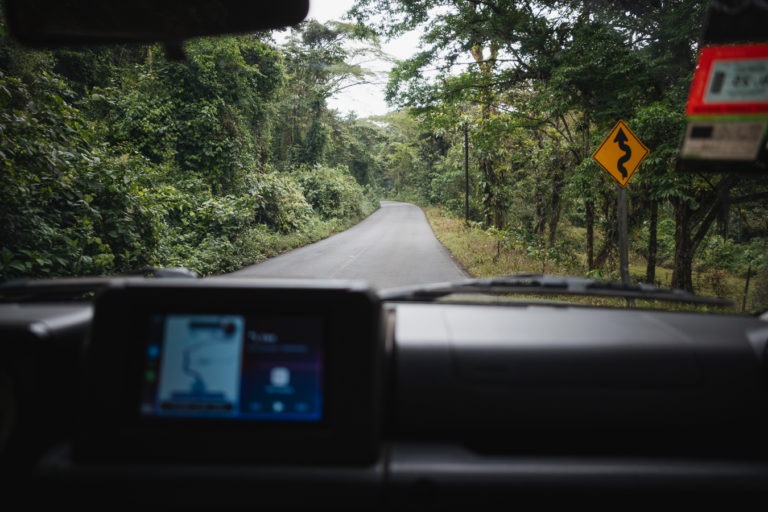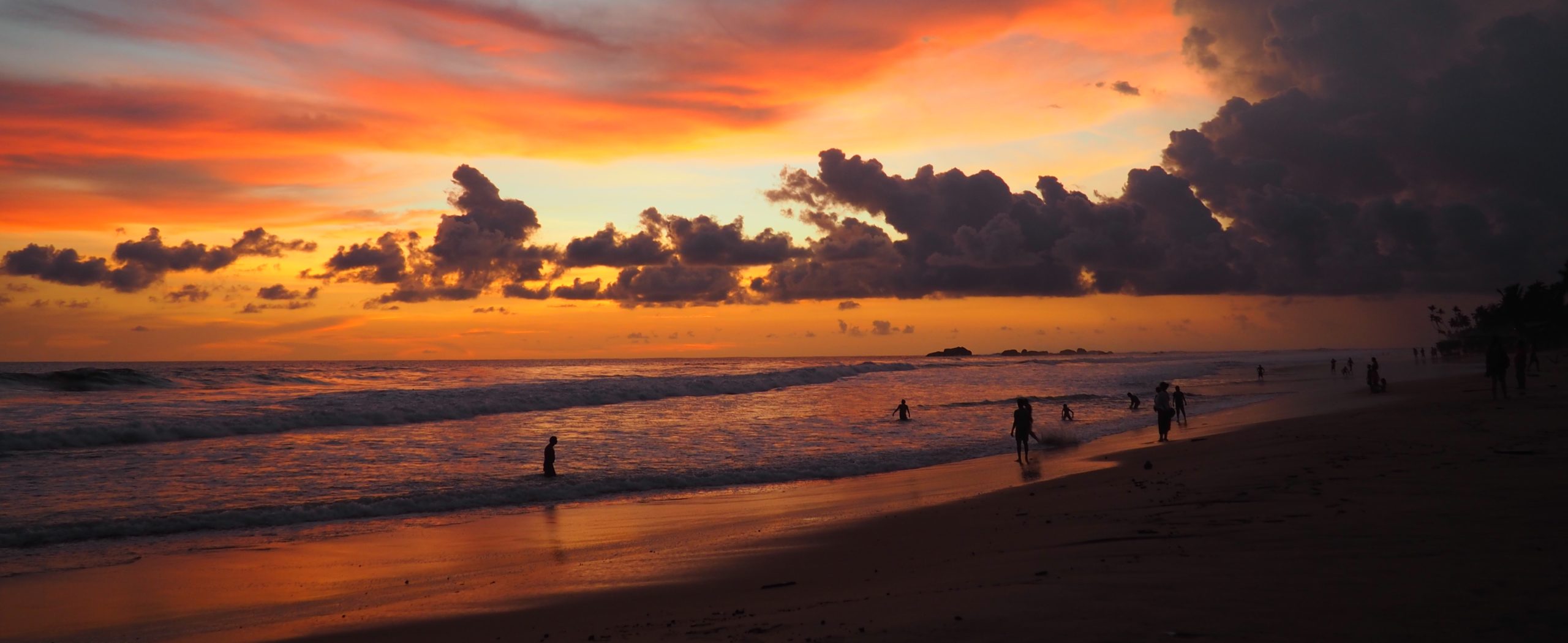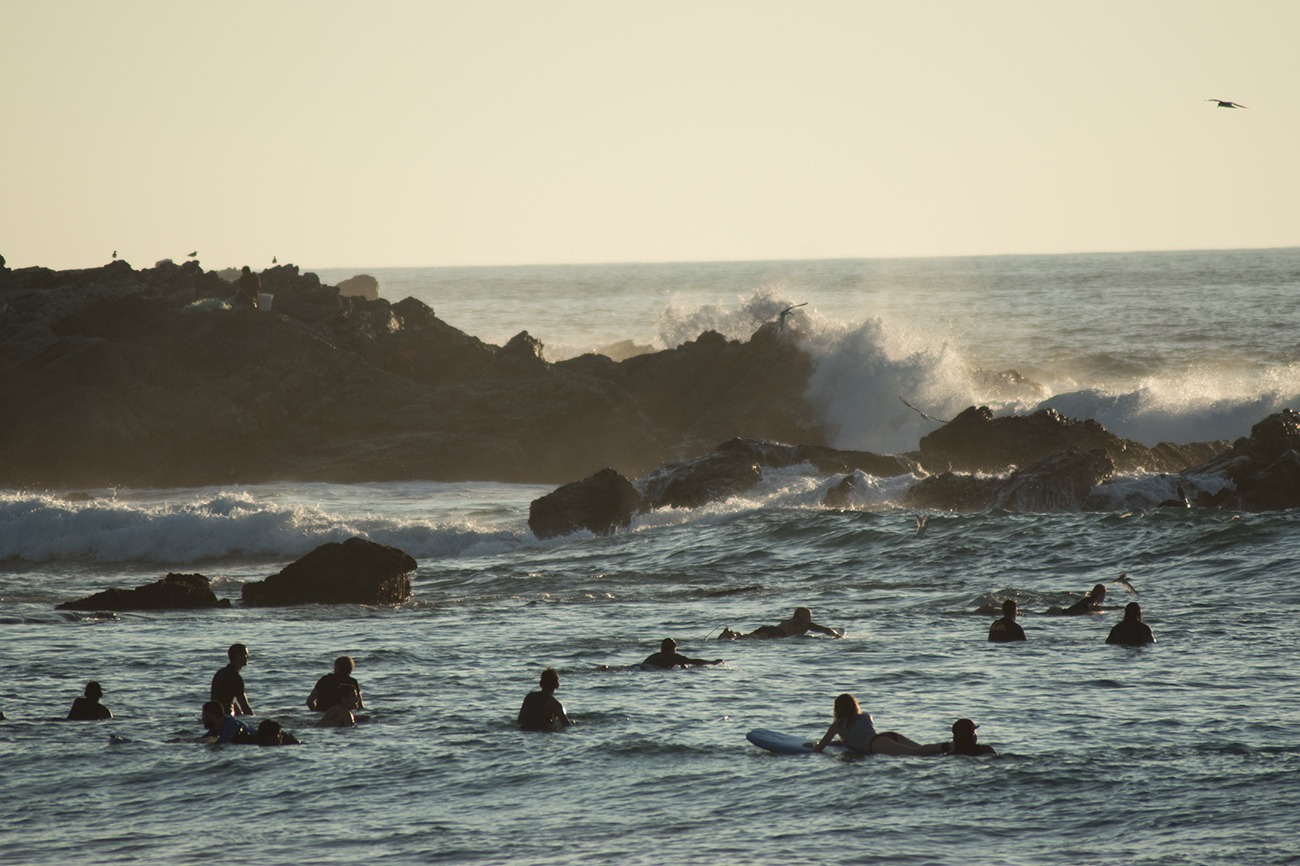Costa Rica is a true paradise for surfers, nature enthusiasts, and those who crave adventure.
Despite its small size, this diverse country has everything you could dream of for a varied trip: dense rainforests, smoking volcanoes, wildlife-rich national parks, and stunning beaches with perfect waves for surfing.
Your Costa Rica itinerary will take you through lush green jungles that practically touch the ocean, to the most colorful sunsets over the Pacific, and along hiking trails where bright red frogs hop to your left as howler monkeys make their presence known in the distance. This is pure “Pura Vida“!
In this blog post, we outline our ideal Costa Rica itinerary for a 2-week travel and share tips for what we believe are the country’s most beautiful spots.
You’ll start your two-week journey in the vibrant capital, make a detour to the Caribbean coast, then head inland before crossing to the other side of the country. Finally, the route will take you to a quieter seaside spot. Let’s get started! 🙂
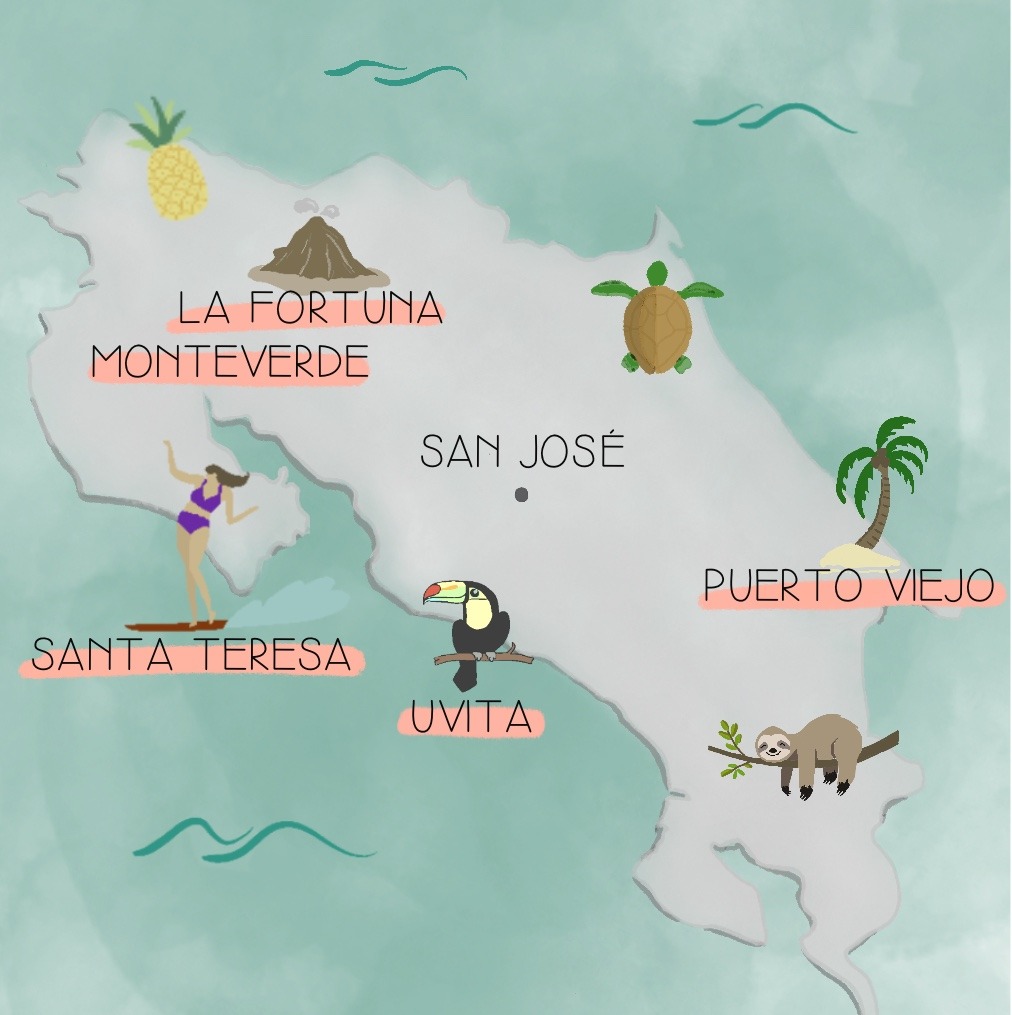
Day 1: San José | Arrival
No matter which airline you fly with, your journey will start in Costa Rica’s bustling capital, San José. San José doesn’t need to play a big role in your 2-week Costa Rica itinerary. After arriving at the airport, it’s worth heading straight to your accommodation to rest up from your flight. Don’t worry about missing out – San José isn’t known for its beauty, and honestly, there’s not much to see compared to the rest of the country.
➳ Our accommodation in San José*
Day 2: San José to Puerto Viejo
After a good night’s sleep, it’s time to head straight to the Caribbean coast on the second day. Your first stop will be the little village of Puerto Viejo, about a 3.5-hour drive from San José.
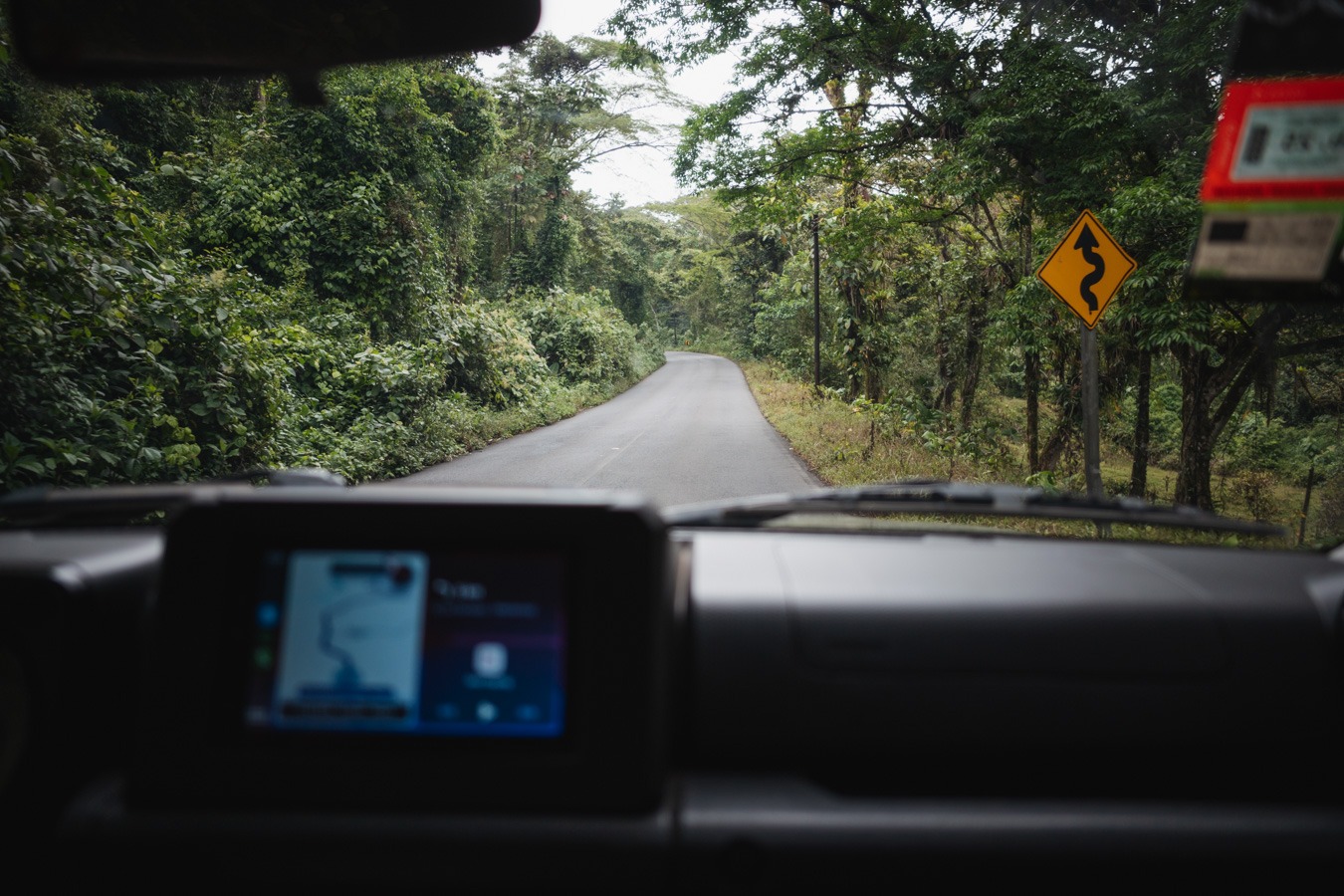
Tip: About halfway between San José and Puerto Viejo, we stopped for lunch at a local “Soda” (a state-subsidized restaurant offering authentic cuisine, where locals often eat). The Casado (a traditional Costa Rican dish with rice, black beans, plantains, salad, egg, etc.) we had was one of the best meals of our entire trip.
After a few rounds of backgammon by the pool and a quick trip to the supermarket, we fell into bed, tired but content, drifting off to the sounds of chirping, croaking, and distant howler monkey calls.
Driving from San José to Puerto Viejo
Renting a car is the most flexible and often the most convenient option. The drive from San José to Puerto Viejo is about 220 kilometers and takes about 3 to 4 hours, depending on traffic and weather conditions. The route takes you along Route 32, which passes through the picturesque Braulio Carrillo National Park, offering breathtaking views of dense rainforests and deep gorges.
After passing through the park, you’ll reach Puerto Viejo after leaving the city of Limón behind.
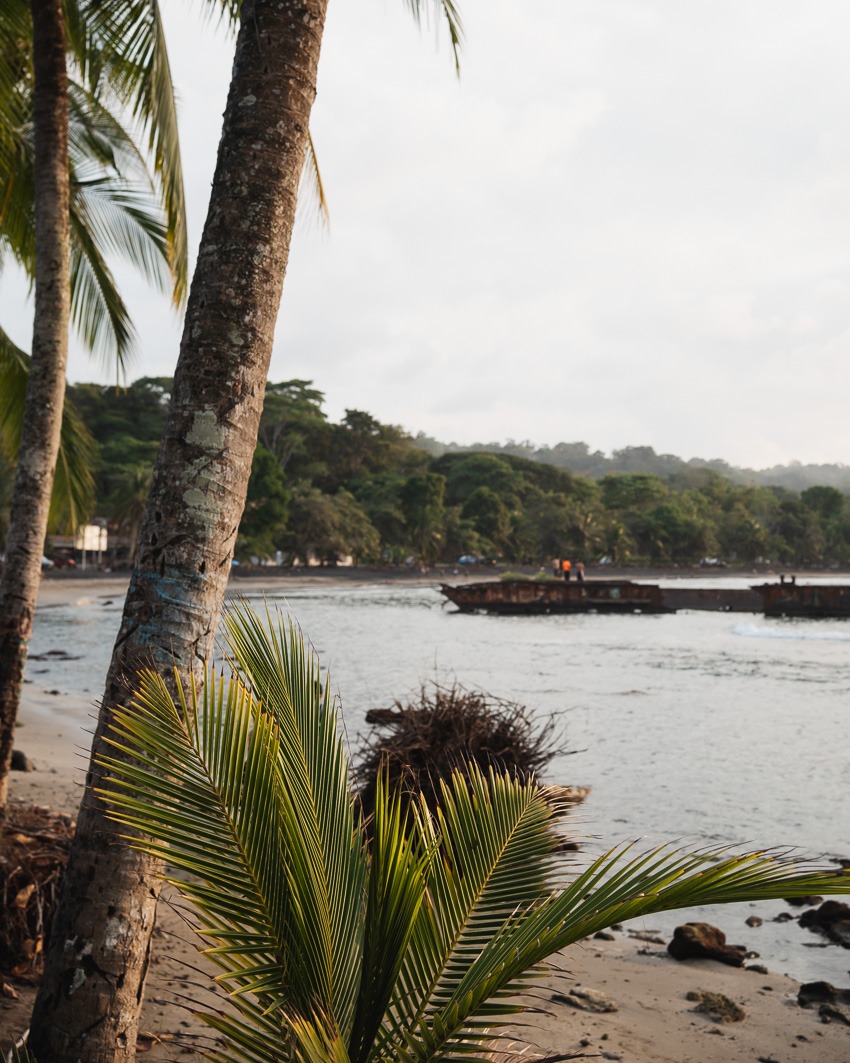

By Bus or Shuttle from San José to Puerto Viejo
If you’re looking for a more budget-friendly option, taking the bus or a shuttle is ideal.
The public bus operated by “MEPE” is a convenient, air-conditioned option that takes about 5 hours from San José to Puerto Viejo. It departs several times daily from the terminal in San José, near Parque de la Merced, and costs about 10-12 USD.
If you prefer to be picked up from your hotel or accommodation, a shuttle – for example, with “Interbus” or “Gray Line” – is your choice. It costs around 50-60 USD per person for the approximately 5-hour, air-conditioned journey.
Day 3-4 of your Costa Rica Itinerary: Puerto Viejo
Puerto Viejo is the epitome of Caribbean relaxation but also vibrant and full of warm locals splashing in the sea with their families. This small village, near the Panamanian border, is known for its laid-back vibes, reggae culture, and a few decent surf spots. Surfing here doesn’t even require a wetsuit! 🙂
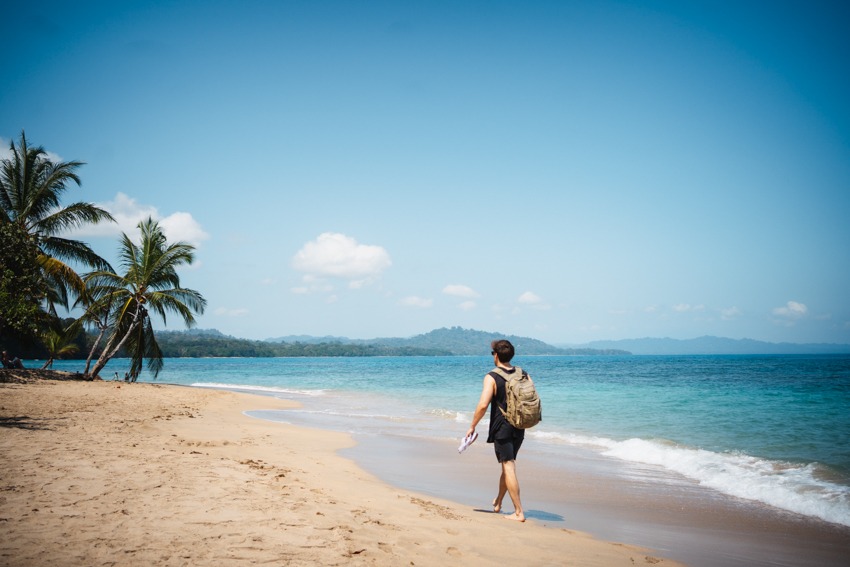
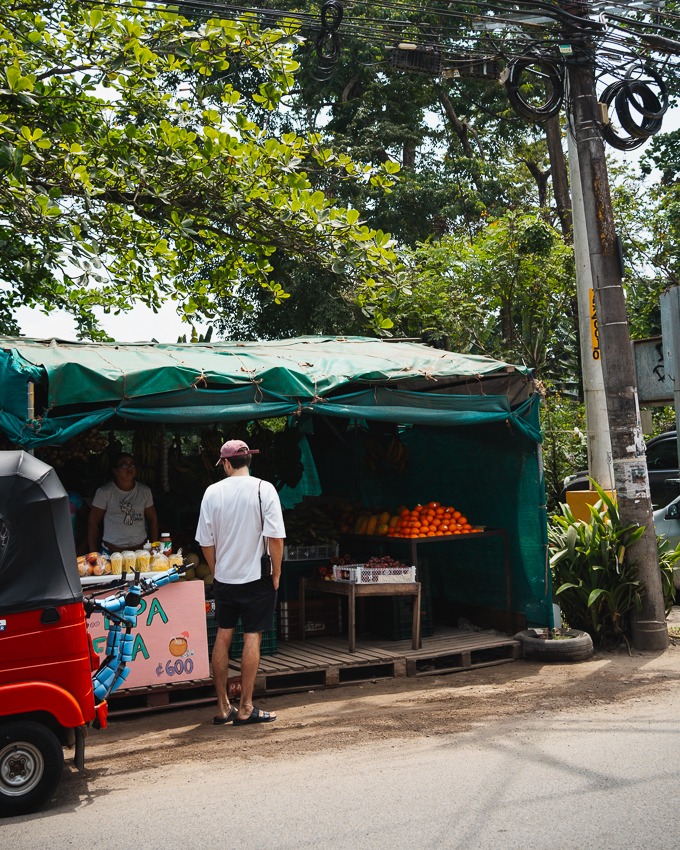
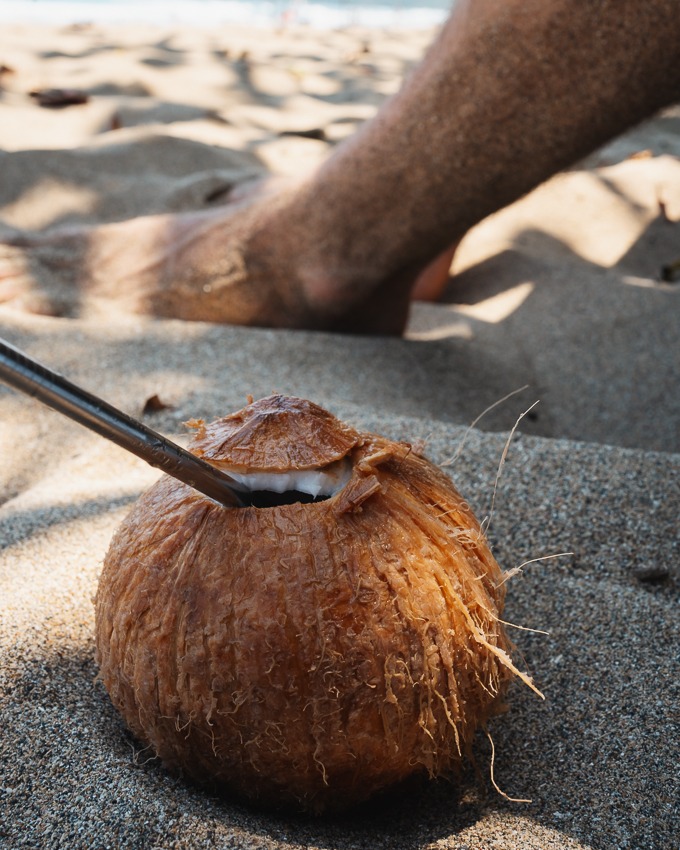
You’ll find endless sandy beaches like Playa Cocles, which is especially popular with surfers, and Playa Punta Uva, ideal for swimming and relaxing. A short trip to Cahuita National Park should also be on your agenda, along with a visit to the Jaguar Rescue Center, where you can get up close with rescued wildlife – but no jaguars, unfortunately! 🙂
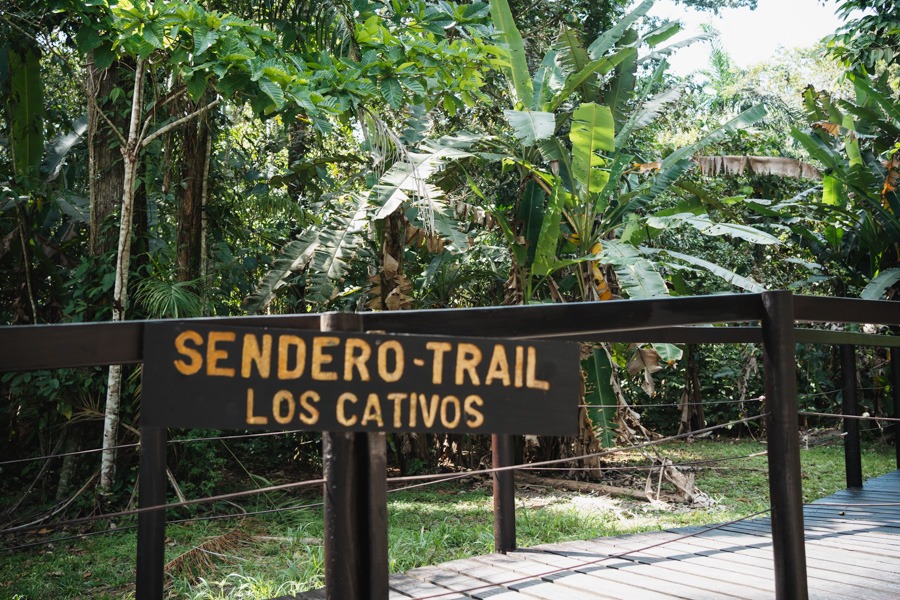

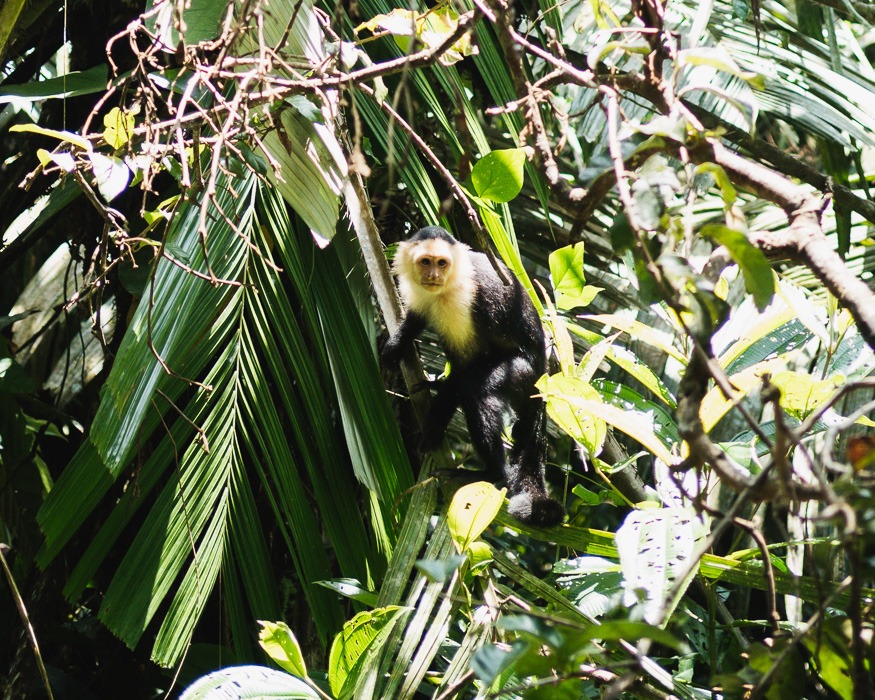
In the evening, cozy beach bars and restaurants serving Caribbean specialties invite you to unwind and enjoy.
Our Top 3 in Puerto Viejo
- Spot: Pirate Bar for Sunset | Playa Punta Uva
- Accommodation: Sonora Jungle Retreat* | Satta Lodge*
- Food: Casado at Lidia’s Place!!!
➳ More about our Top Things to do in Puerto Viejo in our detailed article.
Looking for a place to stay in Puerto Viejo*? Check here:
We mostly book our accommodations through Booking.com and have already reached Genius Level 3, which gives us up to 20% discounts on participating accommodations, as well as free room upgrades or breakfast since Level 2. We can highly recommend the platform.
Day 5: Puerto Viejo to La Fortuna
On the 5th day of your Costa Rica itinerary, you’ll leave Puerto Viejo and head inland to the tourist town of La Fortuna, located at the foot of the imposing Arenal Volcano. La Fortuna is a must on your Costa Rica 2-week itinerary, but it’s wise to plan your activities to avoid the crowds a littleeeee bit.
The parking lots at the hot springs were always so packed when we passed by that we decided against bathing in the volcano-heated waters.
Instead, you can expect rainforests stretching as far as the eye can see, free hot springs, and countless hikes around the volcano area. But more on that below. 🙂
Driving from Puerto Viejo to La Fortuna
Driving to La Fortuna from Puerto Viejo is about 230 kilometers and takes about 4.5 to 5 hours. The route takes you from the Caribbean coast through dense inland forests to the Arenal Volcano. For us, this drive was the most beautiful on our entire trip, and with a bit of luck, you might spot the silhouette of the Arenal Volcano on the horizon if the skies are clear.
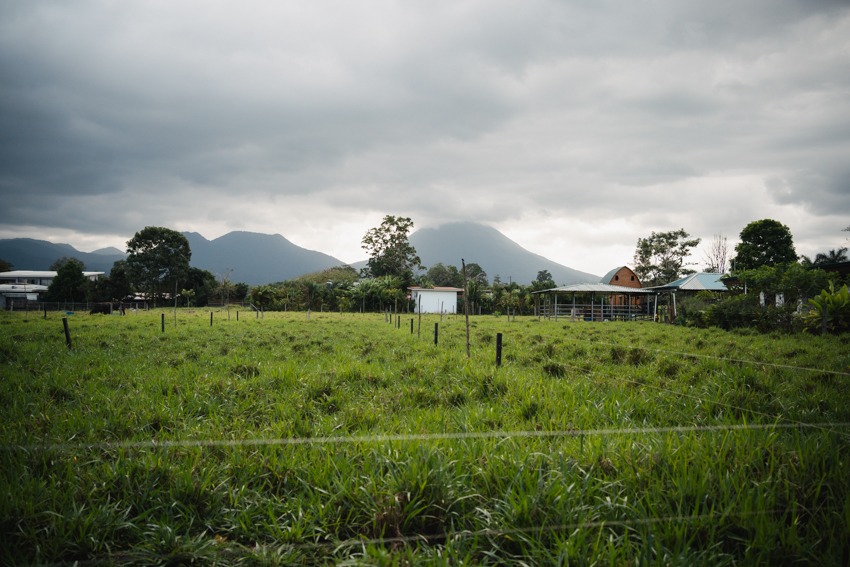
By Bus or Shuttle from Puerto Viejo to La Fortuna
You can also opt for buses or shuttles from Puerto Viejo to La Fortuna. Buses take about 9-10 hours for the journey, as the route from Puerto Viejo usually goes through the capital, San José. At 15-20 USD per person, this is the cheapest travel option, but also the longest.
Shuttle services offer transfers from Puerto Viejo to La Fortuna for about 60-75 USD per person and usually take around 8 hours. Here, too, you’ll be picked up from your accommodation.
Day 6-8 of your Costa Rica Itinerary: La Fortuna
In and around La Fortuna, you can do an incredible variety of activities – from free hot springs to rafting, night walks through the jungle, to hikes around the volcano and to the Rio Celeste, the hanging bridges, and the Sloth Territory (so cuteee <3).
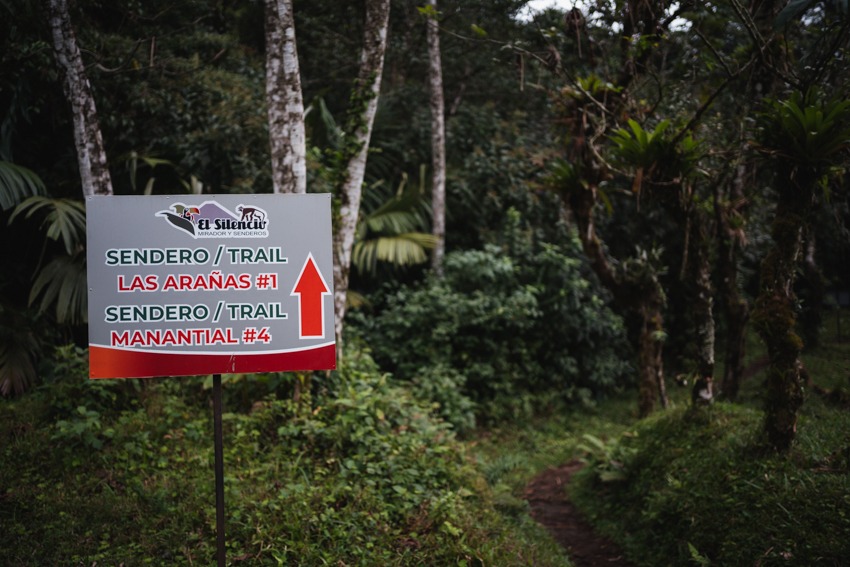


Our Top 3 in La Fortuna
- Spot: El Arenal Hike “El Silencio” at Sunset | Sendero El Tabacón (3) and further on Sender Las Cruces (8)
- Accommodation: Airbnb Tiny House (many have a Jacuzzi)
- Food: We cooked ourselves and dined on the veranda
Tickets for Tours in La Fortuna
➳ How to perfectly fill your days in La Fortuna, read more here.
Accommodation in La Fortuna
Our Airbnb was located a bit outside of La Fortuna (in Monterrey), and we were quite happy with our small, very special tiny house in the jungle, from which we could perfectly carry out our individual excursions.

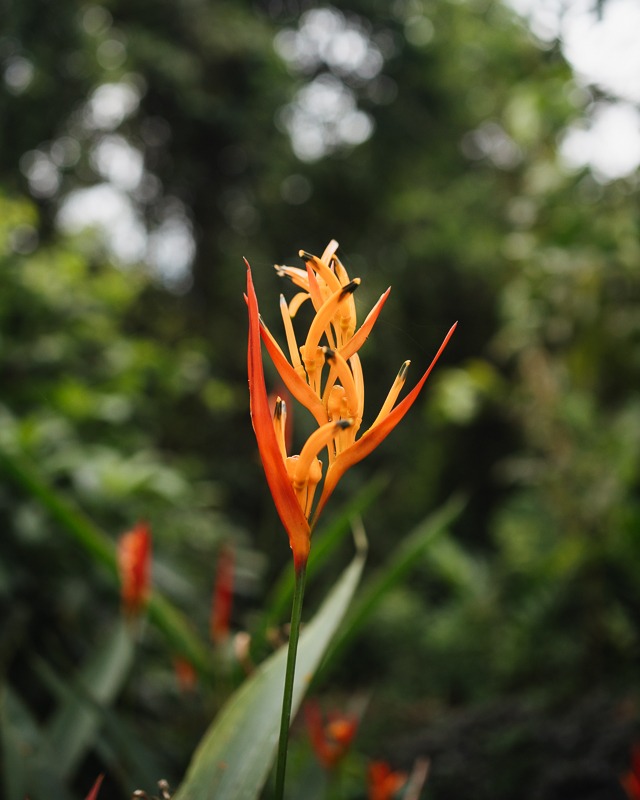
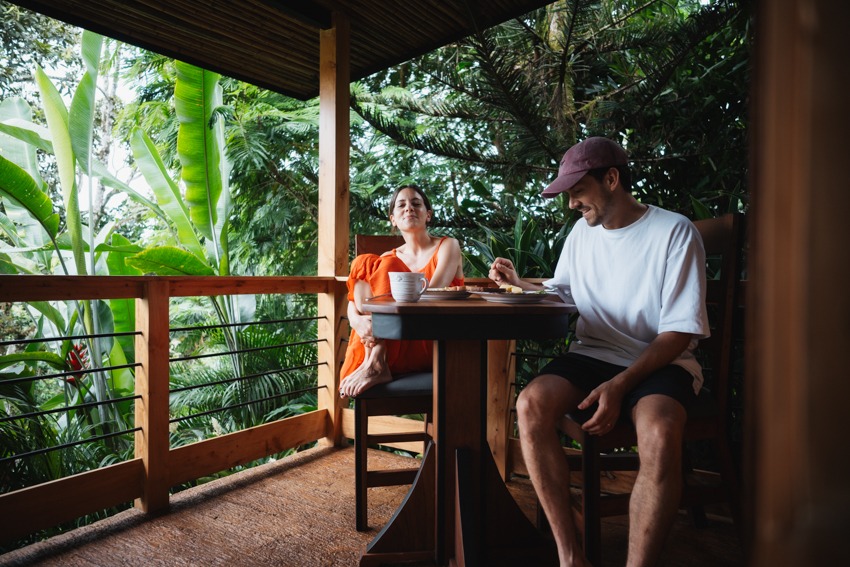
Day 9: La Fortuna to Santa Teresa
Our next stop on your Costa Rica itinerary is Santa Teresa – a paradise for surfers, yogis, and beach lovers at the southern tip of the Nicoya Peninsula. Here, you’ll find endless stretches of beach, amazing waves, and a relaxed, hip atmosphere.
Santa Teresa is just fantastic if you love surfing, yoga, horseback riding, or enjoy sitting in cafes playing backgammon (like us).
Driving from La Fortuna to Santa Teresa
You can reach Santa Teresa from La Fortuna after about 200 km and 5-6 hours by car. Here, you can choose whether to drive the entire distance or take a ferry to the Nicoya Peninsula. We drove the whole way and would do it again.
By Bus or Shuttle from La Fortuna to Santa Teresa
If you’re on a budget, taking the public bus is an option, though incredibly time-consuming. You’ll need to rely on several buses and start your journey via San José again, which can be quite cumbersome: 4 hours to San José, then about 2 hours to Puntarenas, and finally with the ferry and another bus to Santa Teresa, totaling around 10-12 hours but costing only about 20-30 USD.
The shuttle is a more comfortable option and will get you there in 6 to 7 hours. Generally, the ferry connection is used, with costs around 60-80 USD.
Day 10-11: Santa Teresa
Santa Teresa was the epitome of “Pura Vida” on our Costa Rica itinerary. Every evening, we watched the sun set into the Pacific at Playa Santa Teresa, did yoga, Julian hit the surfboard, and we just let ourselves drift.
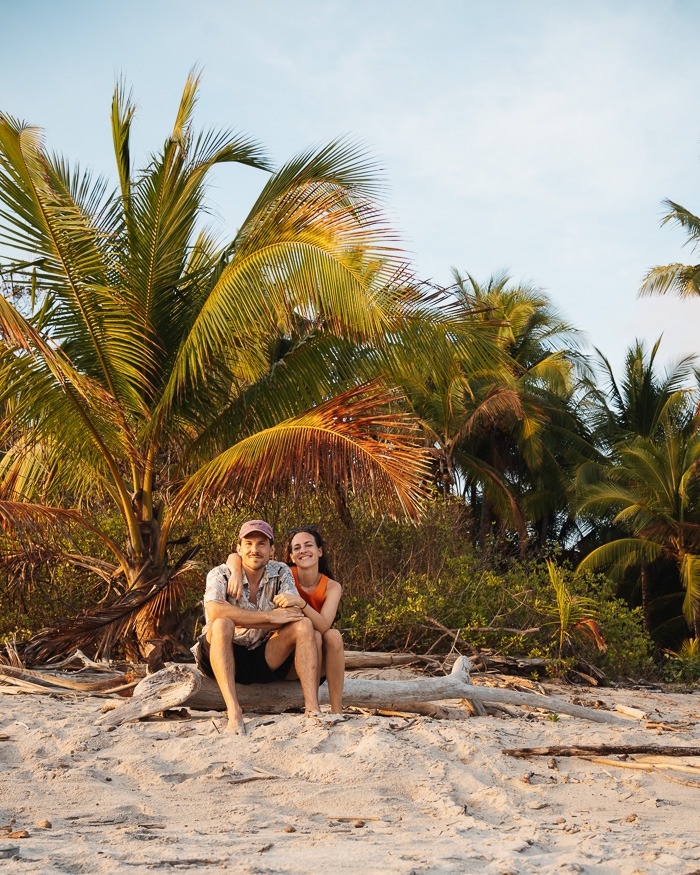
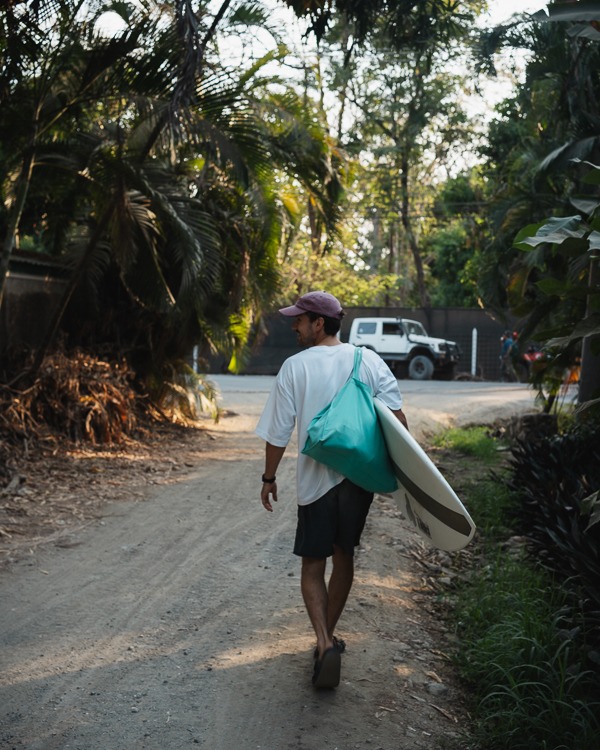
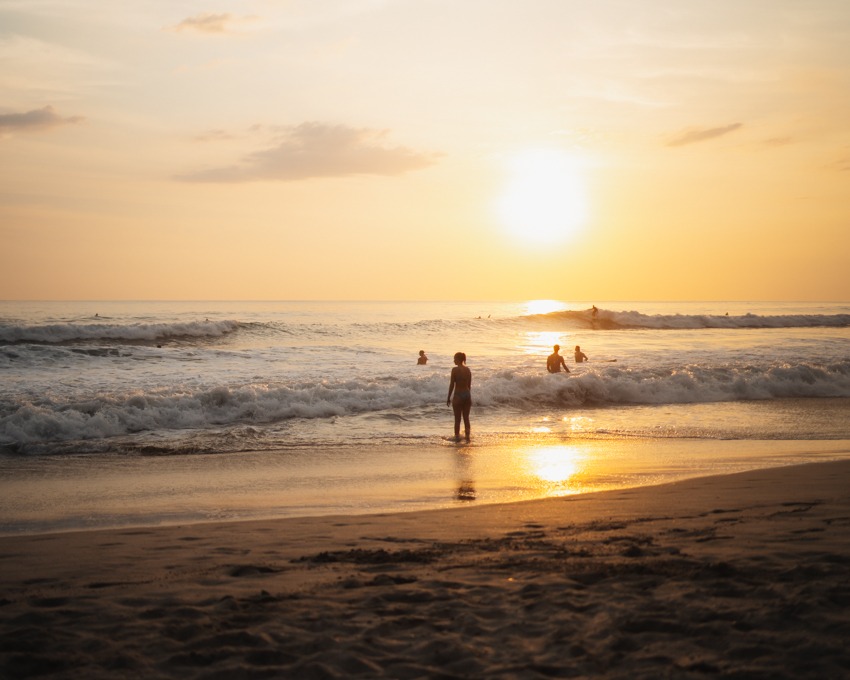
For us, this is what vacation is all about: a great accommodation, in the jungle with a pool and a veranda. Here, we enjoyed a ginger beer or a Corona in the evenings and went to bed early. By just before 7, Julian was usually up again because the waves were just too good to sleep in.
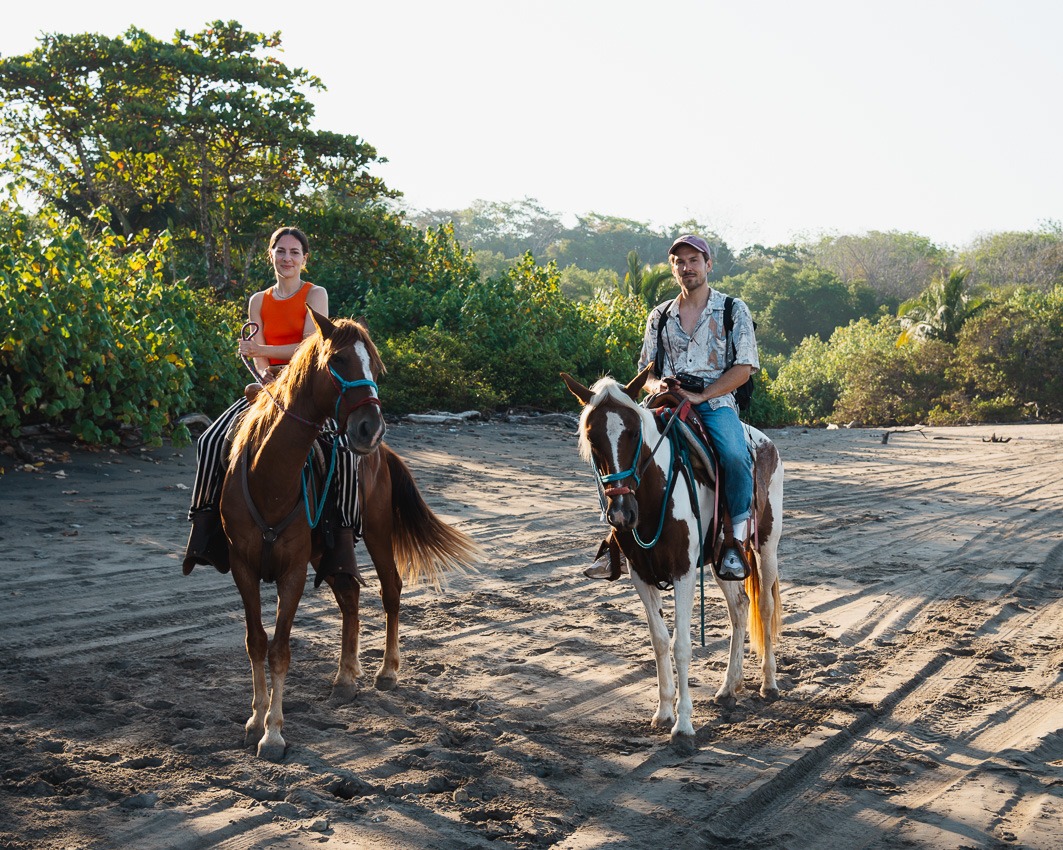
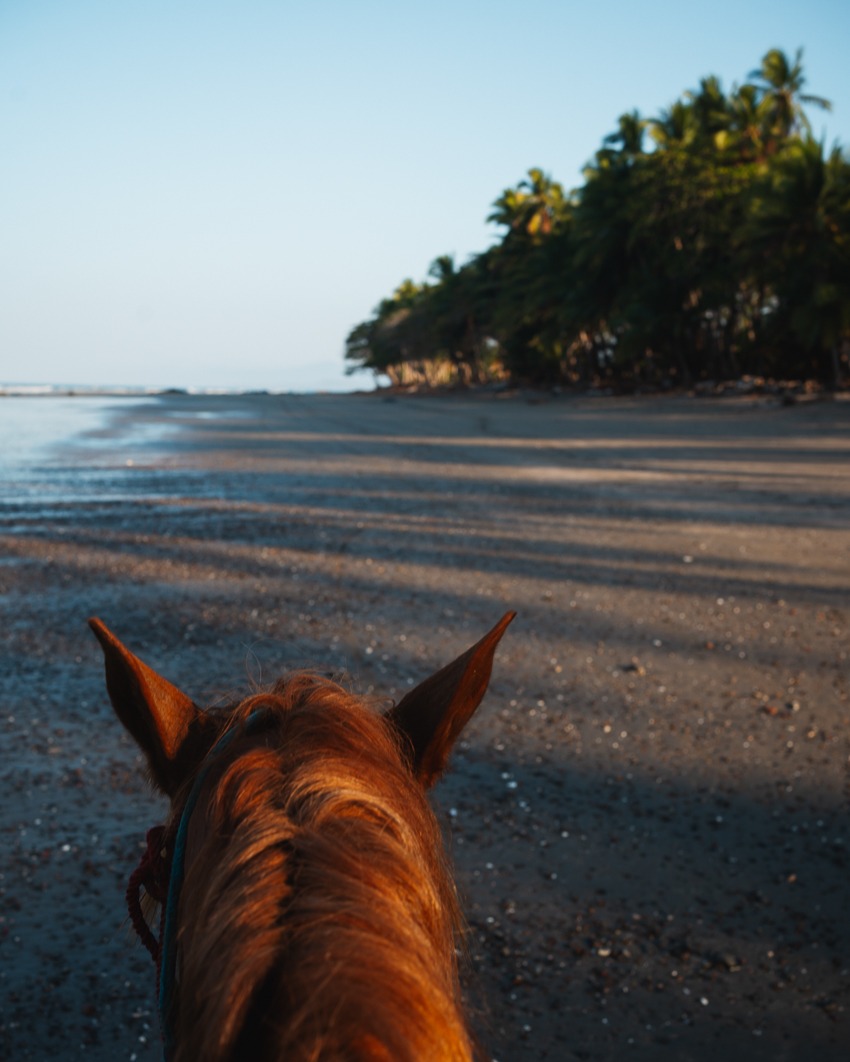

That’s what makes Santa Teresa so special.
But don’t expect an authentic little village in Santa Teresa. The place is great but designed for tourists – just like the prices. If you want to experience authentic Costa Rica again, drive a few kilometers north – there, you’ll find beautiful beaches all to yourself.
Our Top 3 in Santa Teresa
- Spot: Horseback Riding at Sunrise at Playa Manzanillo and along Riverbeds
- Accommodation: Ohana Villas* (highly recommended <3)
- Food: Bowls and Juices at Ani’s Bowls & Salads
➳ Want to know what to expect in Santa Teresa? Check out our detailed article here.
Day 12: Santa Teresa to Uvita or Monteverde
Your journey is slowly coming to an end, and on the 12th day, you’ll head to the last stop of your 2-week Costa Rica itinerary. We’ll offer you two options for how to spend the final stop of your trip:
- Santa Teresa to Uvita
or - Santa Teresa to Monteverde
Depending on what you’re in the mood for, you can choose between Uvita, a picturesque coastal town on the southern Pacific coast, or Monteverde, another inland destination where you can experience the mystical cloud forest and its inhabitants.
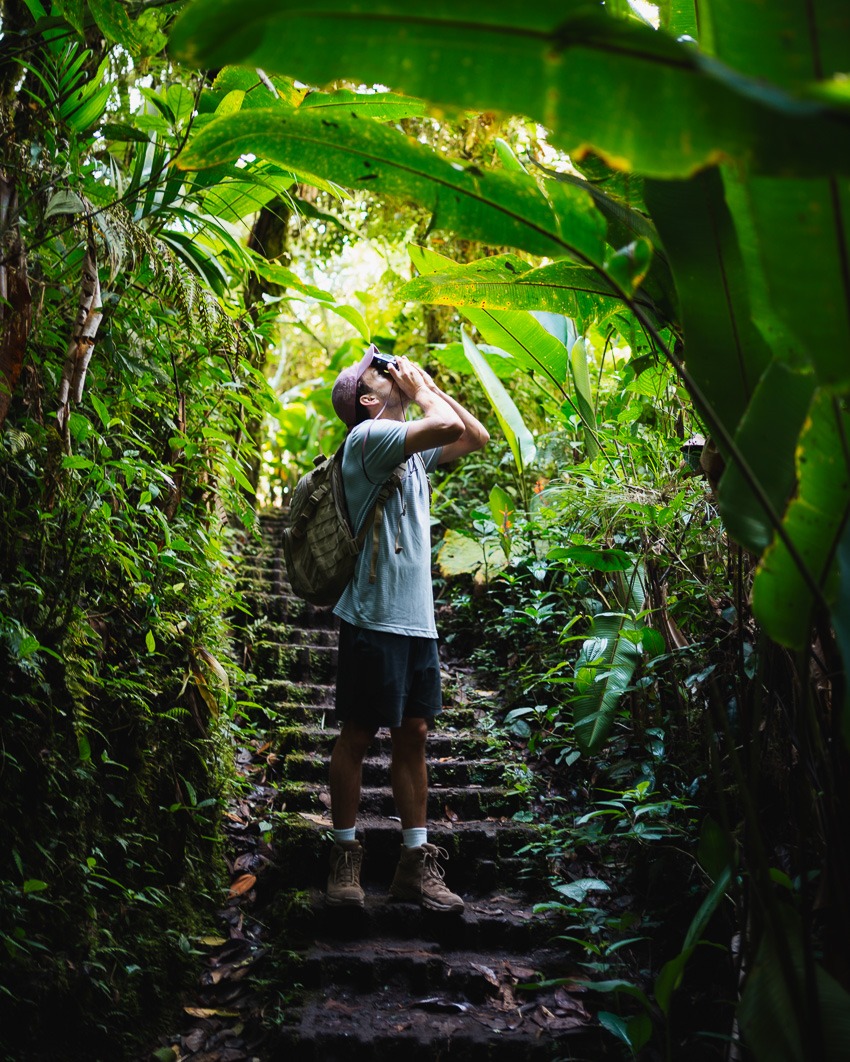
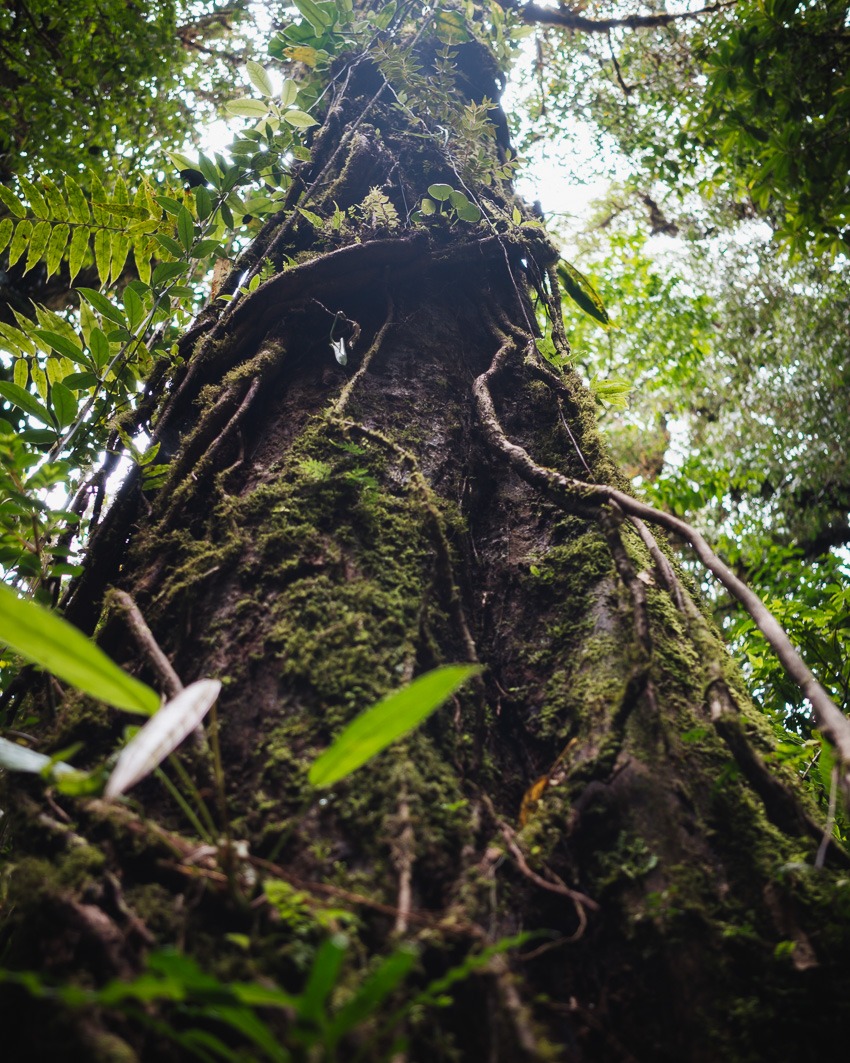
Driving from Santa Teresa to Uvita
Driving from Santa Teresa to Uvita offers two options: 1. Drive the entire route, or 2. Drive to Paquera and take the ferry to Puntarenas, from where you continue the journey by car. The ferry costs about 25 USD per car and 2 USD per person.
By Bus or Shuttle from Santa Teresa to Uvita
If you prefer the bus, a long journey with several transfers awaits: First, take a bus to Cobano, then continue to Paquera, where you take the ferry to Puntarenas, and finally, from Puntarenas, another bus to Uvita. The journey takes about 10-12 hours, and costs around 20-30 USD per person.
The shuttle is the most comfortable option, taking about 7 to 8 hours, including the ferry ride from Paquera to Puntarenas and it costs around 60-80 USD per person, depending on the provider.
Driving from Santa Teresa to Monteverde
The drive from Santa Teresa to Monteverde takes about 4 to 5 hours, with part of the route retracing the path you took from La Fortuna to Santa Teresa.
By Bus or Shuttle from Santa Teresa to Monteverde
The shuttle from Santa Teresa to Monteverde takes about 6 to 7 hours and costs 60-80 USD per person. The journey includes a ferry ride from Paquera to Puntarenas and continues into the mountains of Monteverde.
By bus, the trip takes 8 to 10 hours, requires several transfers, and costs about 20-30 USD per person.
Day 13: Uvita or Monteverde
Unsure whether to choose Uvita or Monteverde for your Costa Rica itinerary? Maybe we can help you decide. 🙂
Uvita
When you google Uvita, you’ll likely see countless photos of the famous Marino Ballena National Park and its massive whale tail-shaped sandbar that emerges at low tide. However, it looks much more impressive from the air than from the ground. Just so you don’t have unrealistic expectations. 🙂
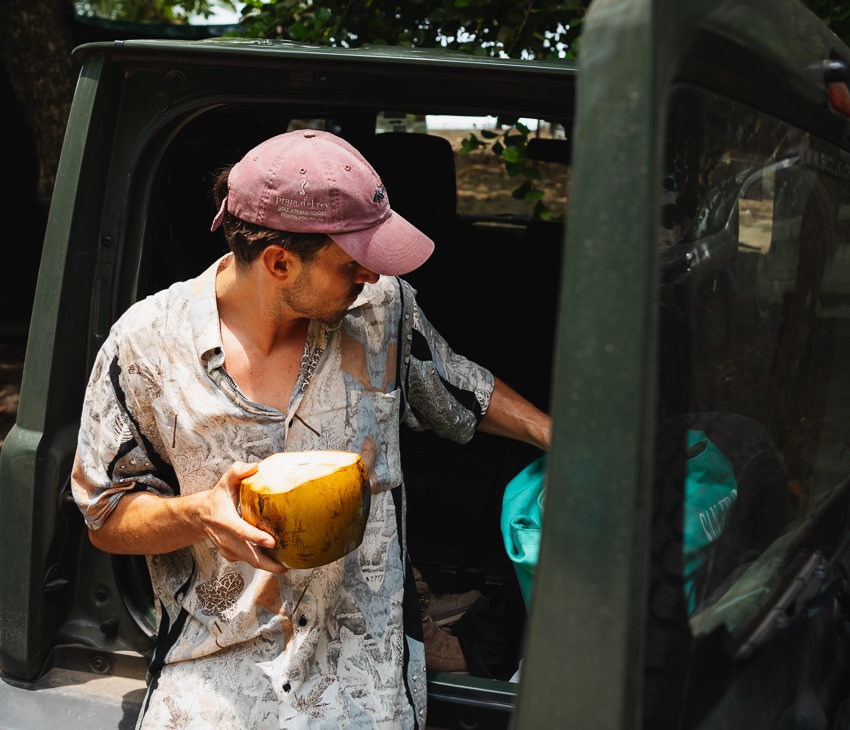
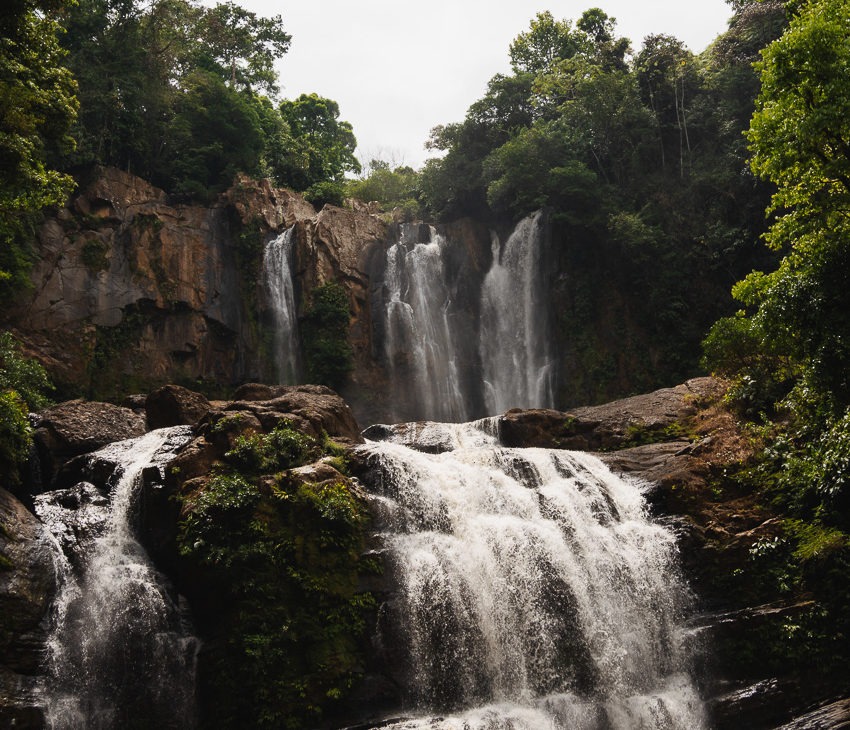
Uvita’s beaches are perfect for relaxing, and there are numerous waterfalls (like the massive Nauyaca Waterfall) in the area to explore, and a rich array of wildlife awaits you. If you’re visiting during the whale season from July to October, it’s the perfect time to spot humpback whales and dolphins.
Our Top 3 in Uvita
- Favorite Spot: Nauyaca Waterfall
- Accommodation: Airbnb “Alma Tierra Mar“
- Food: Veggie Avocado-Ceviche at La Parcela Restaurante (unbelievably good!)
Monteverde
In Monteverde, you’ll experience a green, dense rainforest world covered in moss and lichens. The air always feels cool and humid – a contrast to the hot coastal regions of the country. Monteverde is a paradise for nature lovers and hikers.
Here, you can hike through the Monteverde Cloud Forest Reserve (or alternatively in the Santa Elena Cloud Forest) and observe exotic species, go ziplining, or take night walks through the cloud forest to see nocturnal animals. Monteverde is also famous for its coffee – a guided tour will show you the entire coffee-making process.
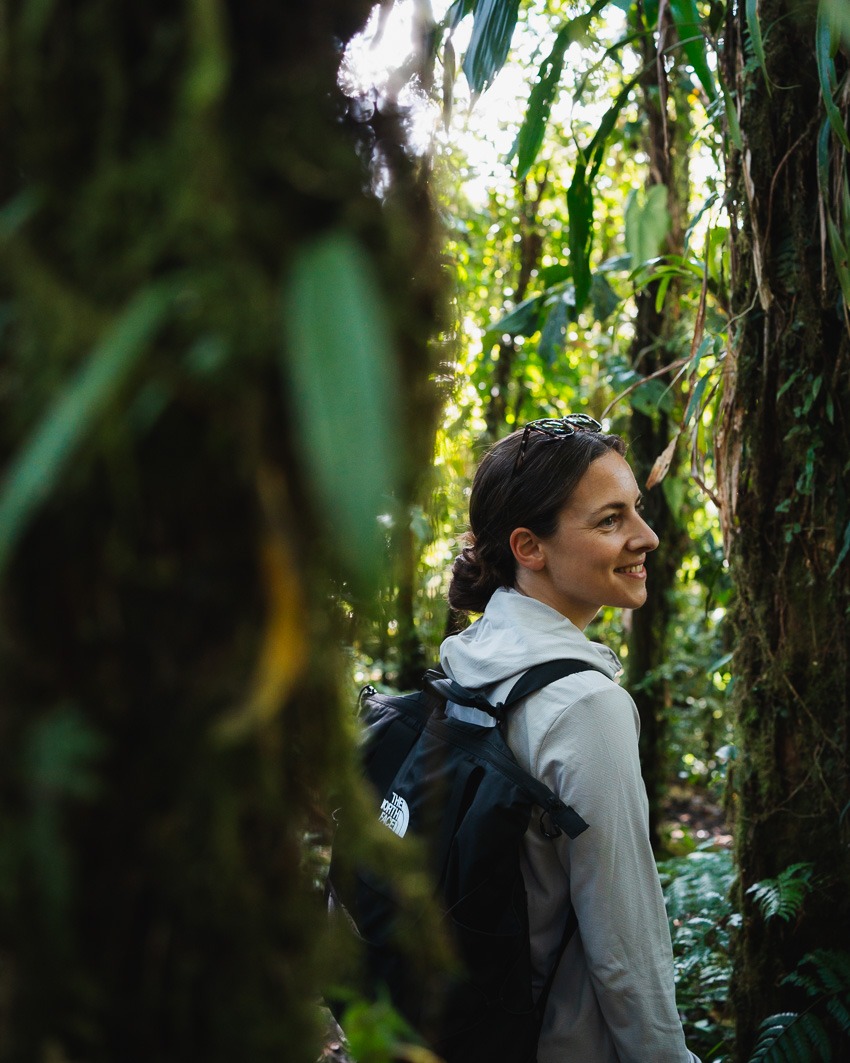
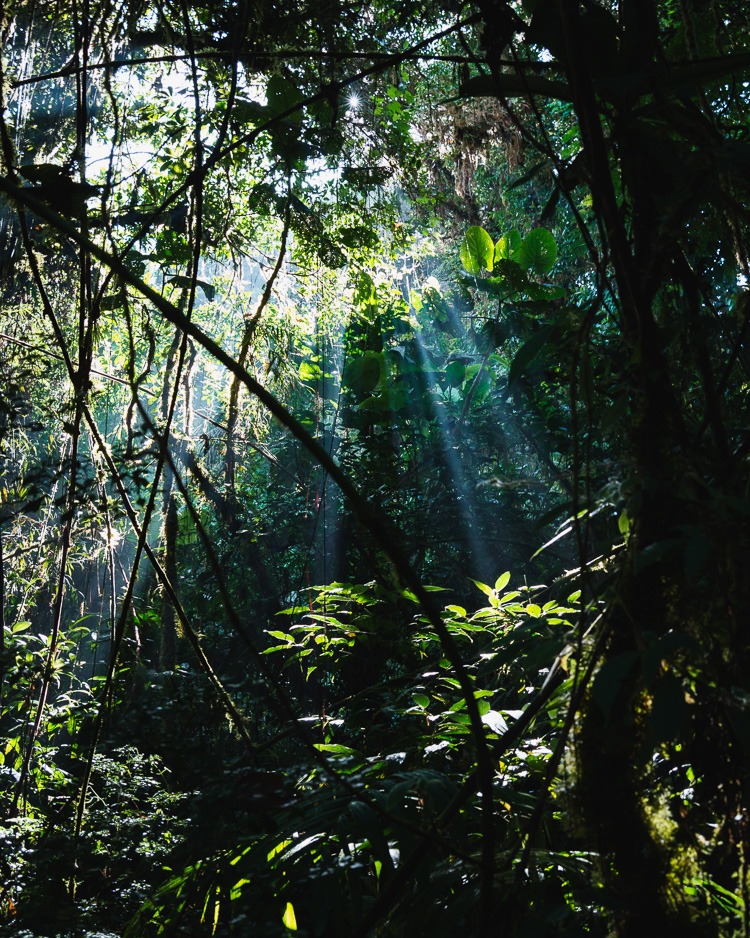
Our Top 3 in Monteverde
- Spot: Santa Elena Cloud Forest
- Accommodation: Airbnb in La Lindora near Monteverde
- Food: San Lucas Treetop Dining, if you want something fancy ($$$)
Tickets for Tours in Monteverde
Day 14: Return from Uvita / Monteverde to San José
After two incredibly exciting weeks in Costa Rica, it’s time to head back to the airport on day 14 from Uvita or Monteverde.
From Uvita to San José by Car, Bus, or Shuttle
If your final stop was in Uvita, you have a 3.5-hour drive ahead of you. Make sure to plan enough buffer time if you need to return your rental car before catching your flight at San José Airport.
A shuttle from Uvita to San José costs about 50-70 USD per person and takes around 4.5 hours. The cheaper bus option takes about 5 to 6 hours and costs around 10-15 USD per person, with multiple departures daily.
From Monteverde to San José by Car, Bus, or Shuttle
The drive from Monteverde to San José takes about 3.5 to 4 hours along winding and sometimes unpaved roads.
A shuttle from Monteverde to San José costs about 50-70 USD per person and takes about 4 hours to reach the capital. The bus ride takes around 5 to 6 hours and costs about 10-15 USD per person, with multiple departures daily.
Conclusion on the Costa Rica Itinerary – 2 Weeks Travel
Costa Rica and this trip were simply perfect – even with 2 days of food poisoning that we picked up along the way! Few trips have made us feel so quickly at home, so comfortable, and have left us with sooo many great memories to talk about.
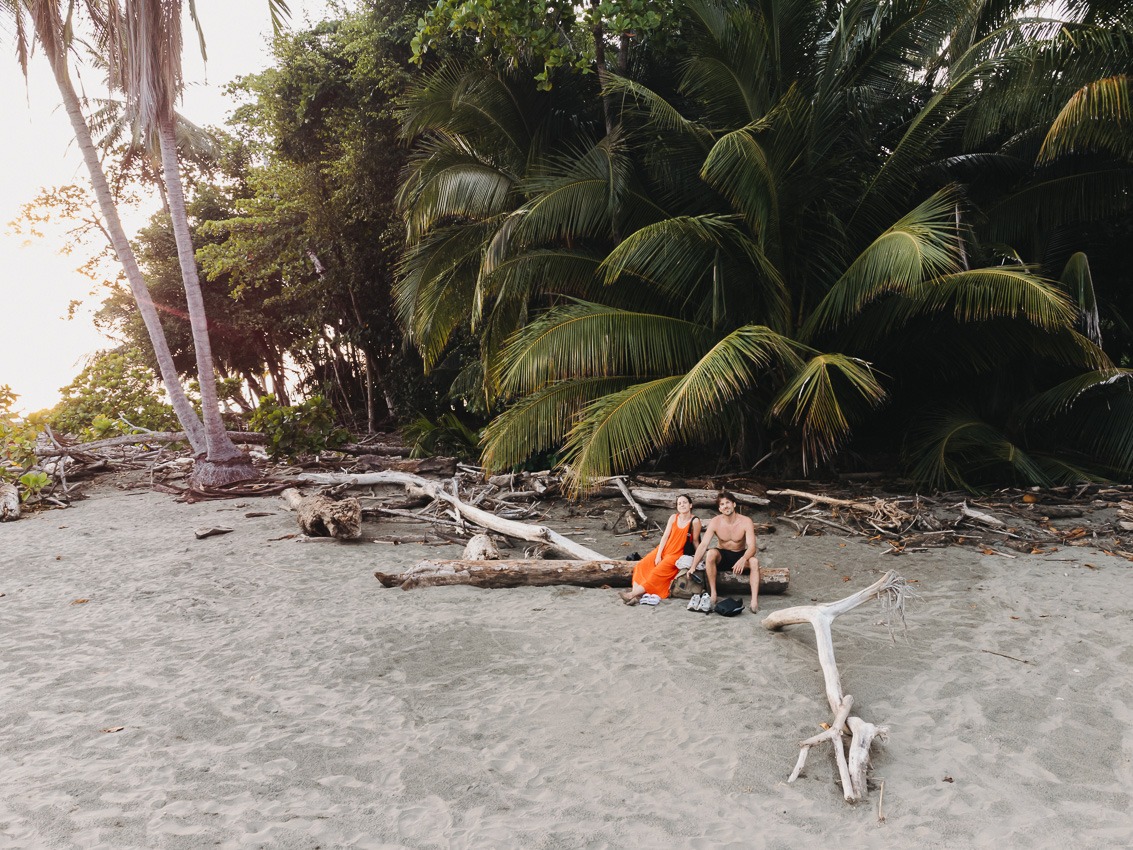
With this 2-week itinerary, you’ll cover as many stops in Costa Rica as possible without making it hectic. However, one thing you could skip if you’re following our 3-week itinerary, which we’ve also put together for you, is the Corcovado National Park.
Important Information for Your Costa Rica Itinerary
Here are a few more important tips on travel time, arrival, safety, getting around, and costs.
Best time to visit Costa Rica
The best time to visit Costa Rica depends – as is often the case – heavily on the region you want to visit.
The dry season from December to April is generally considered the best time to visit, especially for the Pacific coast, including popular surf destinations like Santa Teresa and Uvita. During these months, the weather is sunny and warm, ideal for beach days and outdoor adventures.
The Caribbean coast, including Puerto Viejo, has a slightly different climate and can experience rain throughout the year, with the best months being September and October when it’s drier.
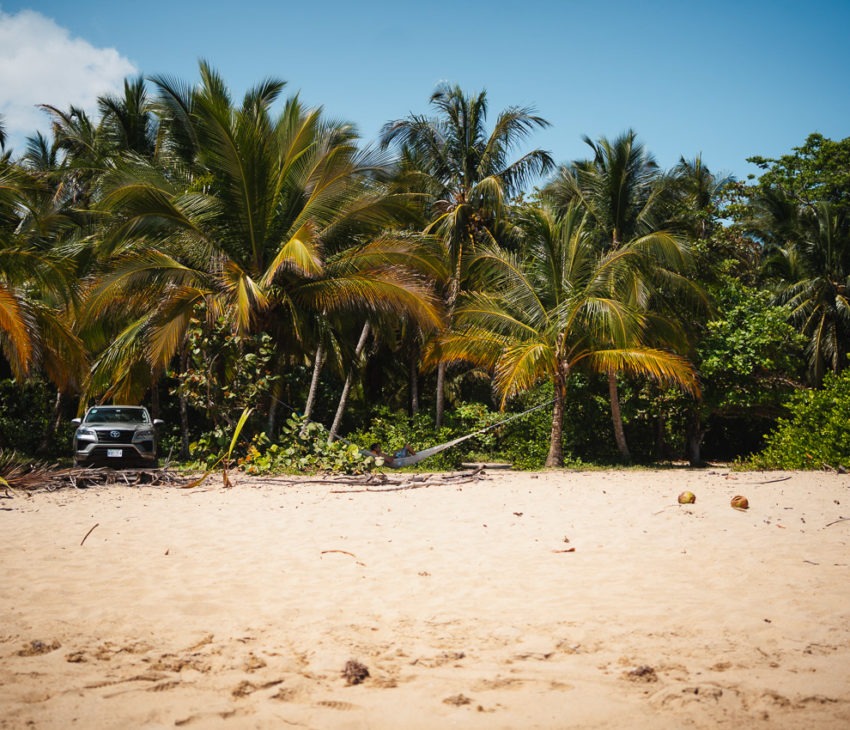
The rainy season, from May to November, brings frequent, sometimes heavy downpours to most parts of the country, especially in October. If you prefer dry days and sunshine, you should avoid the rainy months. Of course, the rainy season can also have its charm when the landscapes are lush and green, and there are fewer tourists, but you should definitely consider renting a 4×4 vehicle.
If you’re flexible, May and November offer a good balance between weather and tourist crowds.
➳ Also read: Best time to visit Costa Rica
Arrival in Costa Rica
The usual arrival in Costa Rica is through San José International Airport (SJC), although the country has another major international airport: Liberia International Airport. For our Costa Rica itinerary, we paid 950 EUR per person for round-trip flights from Cologne/Bonn to SJC, including luggage.
Flights to Costa Rica
Safety in Costa Rica
Costa Rica is considered one of the safest travel destinations in Central America, especially for tourists. However, keep in mind that Costa Rica is still part of Central America, and it’s important to take some precautions, just like anywhere else: avoid displaying valuables and keep an eye on your belongings, especially in crowded areas.
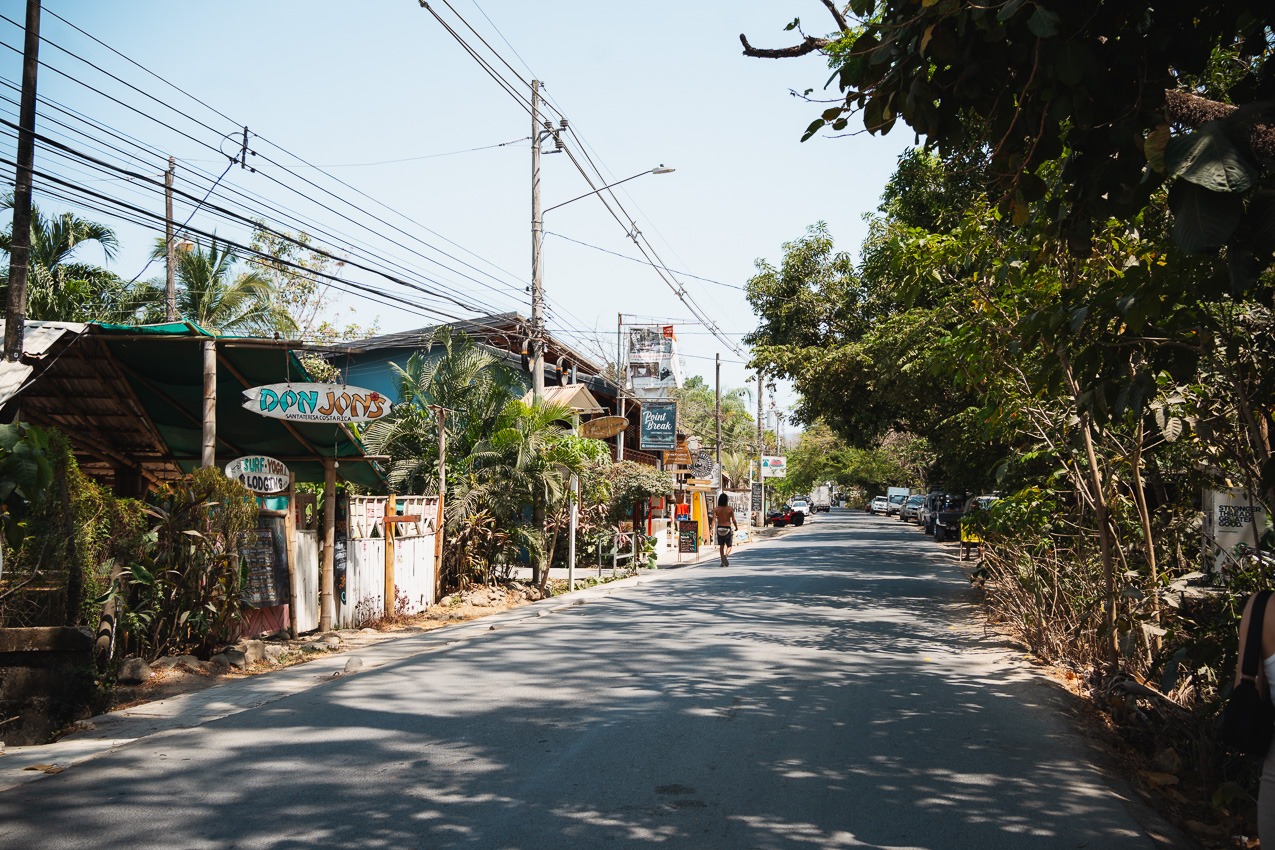
We never felt uncomfortable at any time, thanks in large part to the warmth and openness of the Costa Ricans.
Getting around in Costa Rica
Getting around in Costa Rica is relatively easy. Depending on your budget and sense of adventure, you have several options:
Driving in Costa Rica
If you want to be flexible and visit more remote areas without restrictions, renting a car is the best choice for you.
A little tip: definitely use the Waze app (instead of Google Maps), as it works much better, especially in rural areas.
The roads in Costa Rica are generally very well developed – unless you take a detour onto sometimes unpaved and bumpy paths.
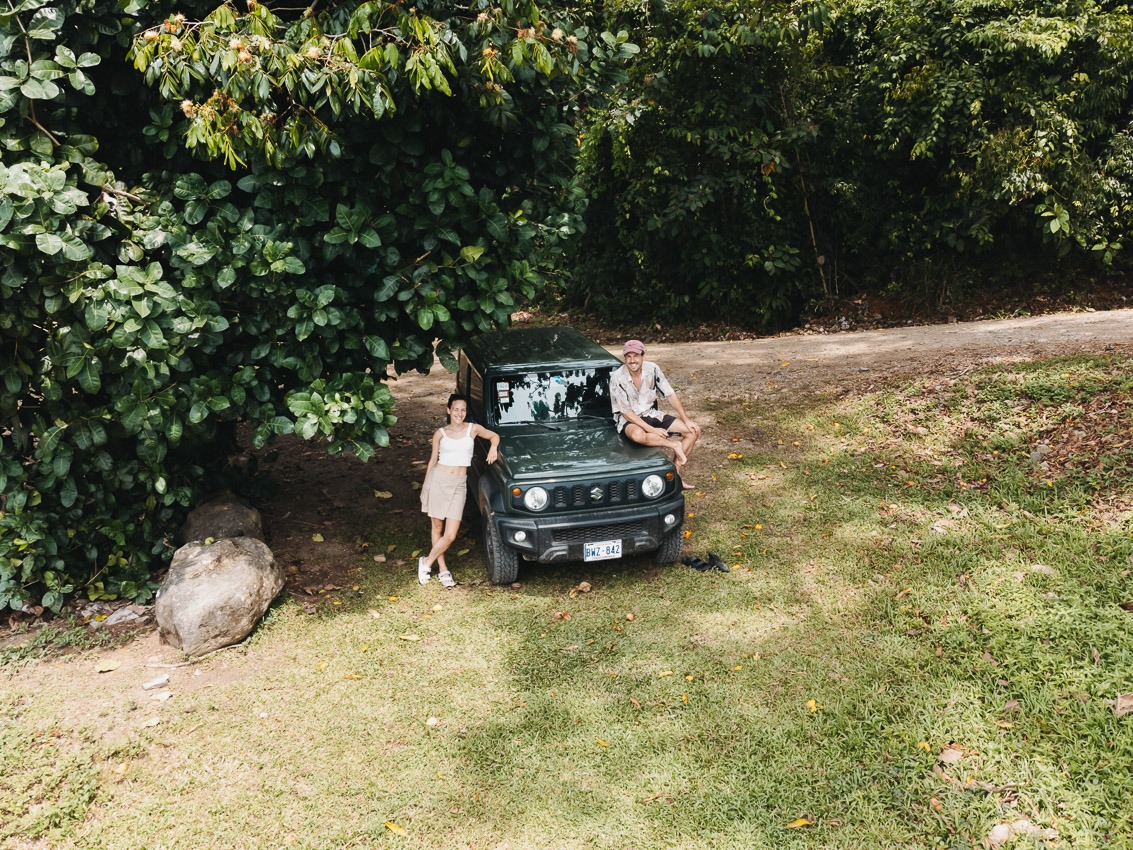
4×4 in Costa Rica?
People often ask if a 4×4 is necessary. We had a 4×4 vehicle and were actually very glad to have it at one point. It rained overnight, and we had the brilliant idea of taking the “shorter route” to the waterfall after a rainy night, only to end up sliding down small hills and struggling with uphill starts on very muddy terrain. It all ended in a nerve-wracking mud drive where the tires kept spinning because they couldn’t grip the wet ground.
At that moment, we were really relieved to have the added security of a 4×4. All in all, we recommend getting a 4×4, especially if your accommodations are off the main roads, at higher elevations, or if you’re traveling during the rainy season, even if you might not absolutely need it.
Taking the Bus in Costa Rica
Public buses are the most budget-friendly option and cover the entire country well, but they are often slow and crowded. Be prepared to take longer routes via the capital, San José, for longer distances, which can make the journey take longer.
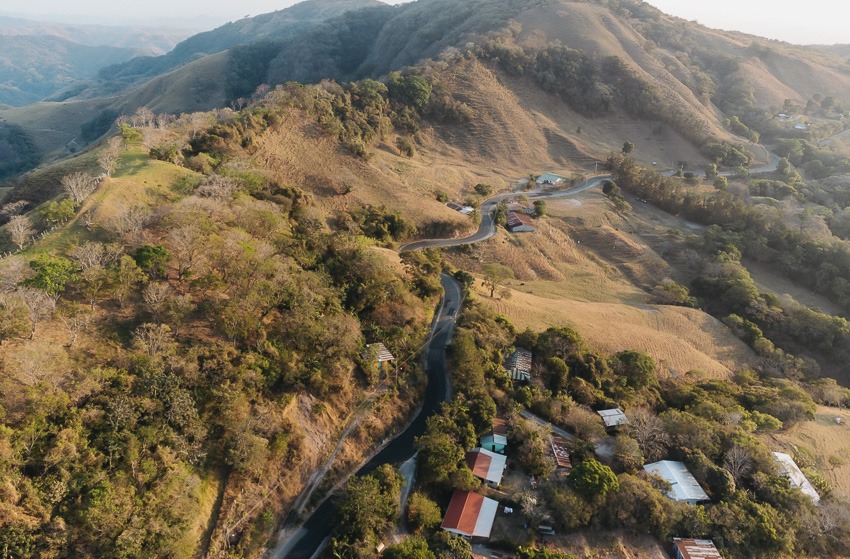
Taking a Shuttle in Costa Rica
Van shuttles offer a comfortable alternative and connect the main tourist destinations. You can and should book the shuttle in advance, especially during the high season.
Some of the largest shuttle providers are:
- Interbus: One of the oldest and most well-known shuttle providers in Costa Rica, with daily connections between the major cities.
- Gray Line Costa Rica: Offers both private and shared shuttle services and covers many tourist hotspots across the country.
- RideCR: Known for its modern vehicles and reliable services, RideCR connects many popular destinations in Costa Rica.
- Shuttle Costa Rica: Offers both shared and private shuttle services that are punctual and comfortable.
- Caribe Shuttle: Specializes in the Caribbean coast, offering connections from San José to places like Puerto Viejo, Tortuguero, and Bocas del Toro in Panama.
Costs in Costa Rica
Costa Rica is known as the Switzerland of Central America – meaning you should definitely prepare for higher costs during your Costa Rica itinerary compared to other Central American countries. The official currency is the Costa Rican Colón, but US dollars are widely accepted. We generally paid with colones.

- Accommodations in Costa Rica
- Budget Hostels: 10-30 USD per night
- Hotels: 50-150 USD per night
- Transportation in Costa Rica
- Bus: about 5-15 USD for longer journeys
- Shuttle: about 70-90 USD for longer journeys
- Rental Car: about 70-130 USD
- Activities in Costa Rica: about 20-80 USD
- Food in Costa Rica:
- Local Sodas: about 10 USD
- Restaurants: 15-30 USD
- SIM Card in Costa Rica: 3-5 USD
Our Favorites: Where to stay in Costa Rica
- San José: $ Cata Bed Breakfast | $$ Posada del Quijote | $$$ Hotel Grano de Oro
- Puerto Viejo: $ La Tica y la Gata | $$ Sonora Jungle & Yoga Retreat | $$$ Satta Lodge
- La Fortuna: $ Arenal Descanso | $$ Fortuna Retreat | $$$ Sangregado Lodge
- Monteverde: $ Hospedaje Mariposa | $$ Cabinas Capulin & Farm | $$$ Way To Heaven Glamping
- Santa Teresa: $ Surf Vistas Villas | $$ Ohana Villas (highly recommended <3) | $$$ Vista del Alma Boutique
- Uvita: $ Tropical Beach | $$ Tamandua Homes | $$$ Alma Tierra Mar (AirBnb)
Do you have any other places that shouldn’t be missed on a 2-week Costa Rica itinerary? Feel free to share them in the comments! <3
_____________
This blog post contains affiliate links. This means that we receive a small commission if you book through one of the links. Of course, there are no additional costs for you. A lot of heart and soul went into this blog. We would be incredibly grateful if, with your help, we can continue to passionately provide detailed travel information for you. Thank you <3<3<3
_____________
Looking for more wanderlust?
➳ Costa Rica isn’t enough – Mexico on your list too? Check this out: The Perfect Mexico Itinerary
➳ Mexico’s waves are calling? Off to surf in Puerto Escondido!
➳ Or maybe Nicaragua? Here’s our guide to traveling through Nicaragua!

